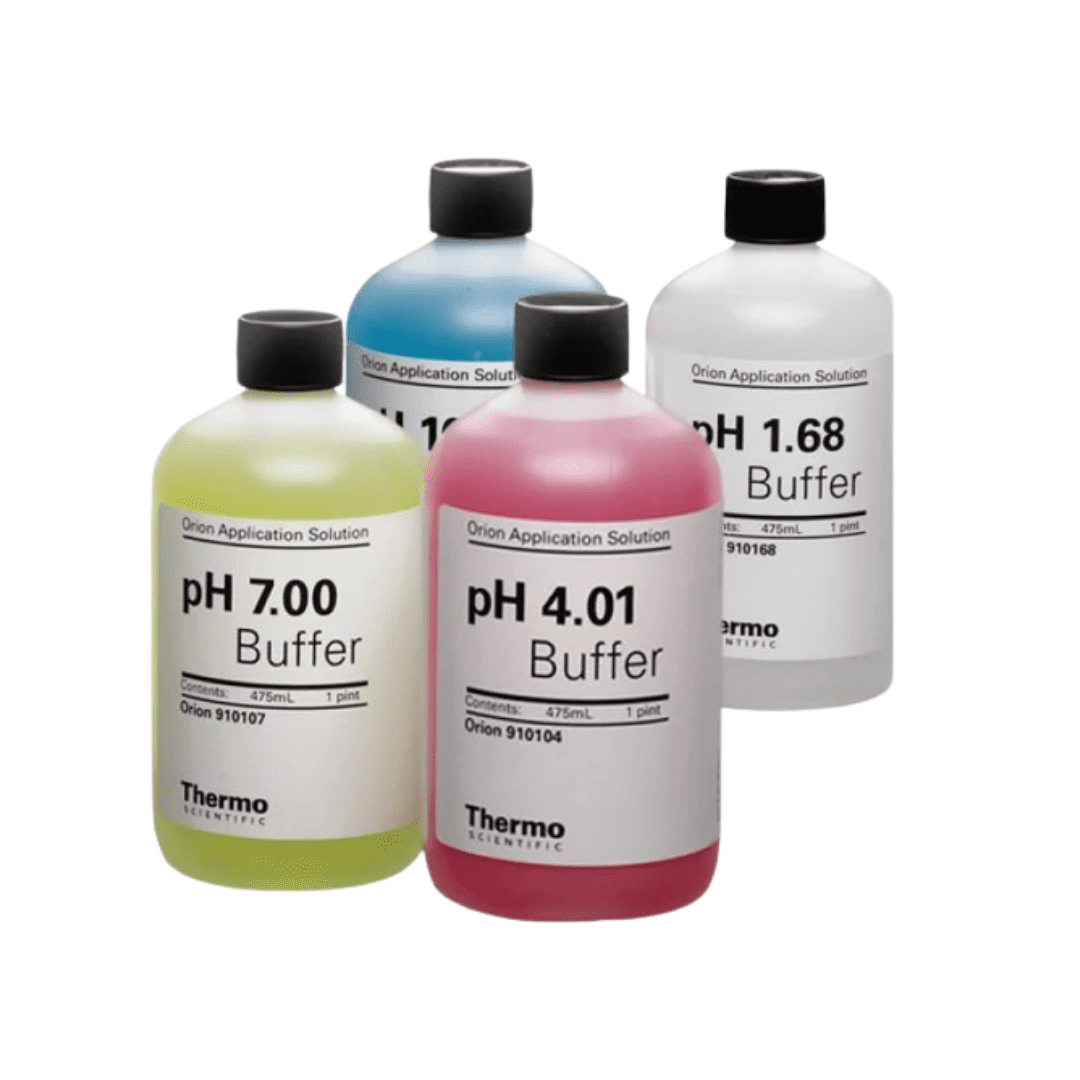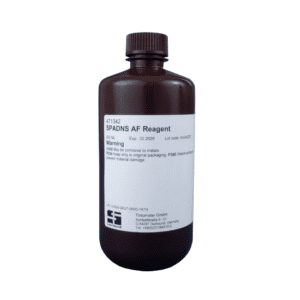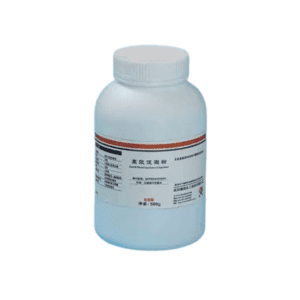Buffer Solutions
Description
General Laboratory Chemicals – Buffer Solutions: Ensuring Stable pH for Accurate Lab Results
Buffer solutions are vital in laboratory research to maintain a consistent pH level during experiments, providing an environment where chemical and biological reactions can proceed optimally. These solutions are mixtures of weak acids and their conjugate bases (or vice versa) that resist changes in pH when small amounts of acid or base are added. The ability of a buffer solution to stabilize pH is critical in fields like biochemistry, molecular biology, and chemical analysis, where slight pH fluctuations can significantly affect the outcome of experiments.
Buffer solutions are prepared by dissolving buffer salts in water, creating an equilibrium that helps the solution resist pH changes. The pH range of the buffer solution depends on the components used, and different buffer solutions are selected depending on the specific pH required for an experiment. These solutions are indispensable in applications such as enzyme reactions, PCR (Polymerase Chain Reaction), protein purification, and cell culture.
In addition to their scientific importance, buffer solutions are used in a wide range of industries, including pharmaceuticals, food and beverage, and environmental testing. In these industries, maintaining a stable pH is essential to ensuring the safety and quality of products, as well as for meeting regulatory standards.
Applications of Buffer Solutions:
- Biochemical and Molecular Biology Research: Buffer solutions are used to maintain pH stability in enzyme assays, DNA/RNA work, and protein studies, where pH control is critical for the accuracy of experiments.
- Cell Culture: In biological research, buffer solutions maintain the pH of culture media to support the growth and survival of cells.
- Titrations and Analytical Chemistry: Buffer solutions are used in titrations to ensure accurate measurement of the concentration of acids or bases.
- Pharmaceuticals: Used in drug formulation and testing to maintain pH during stability studies and clinical trials.
- Food and Beverage Industry: Buffer solutions are used in quality control to ensure products maintain consistent pH levels, which can affect taste, texture, and preservation.
- Environmental Testing: Buffer solutions are used to monitor water quality and ensure regulatory compliance by maintaining proper pH levels in environmental samples.
Comprehensive List of Products in the Buffer Solutions Category:
1. Phosphate Buffer Solution (PBS):
- Applications: Widely used in cell culture, immunology, and molecular biology. It maintains a physiological pH of 7.4.
- Industries: Biotech, pharmaceutical research, clinical diagnostics.
- Features: Contains sodium chloride, potassium chloride, sodium phosphate, and potassium phosphate.
2. Tris-HCl Buffer:
- Applications: Commonly used in molecular biology, including DNA/RNA manipulation, protein assays, and electrophoresis.
- Industries: Biotechnology, molecular biology, and diagnostics.
- Features: A strong buffer for maintaining pH between 7 and 9.
3. Acetate Buffer Solution:
- Applications: Ideal for biochemical assays, enzyme reactions, and protein studies.
- Industries: Biochemistry, protein chemistry, and analytical chemistry.
- Features: Maintains pH in the acidic range (4.75 – 5.75).
4. Citrate Buffer Solution:
- Applications: Used in enzyme reactions, protein purification, and chromatography.
- Industries: Chemical synthesis, protein research, and analytical chemistry.
- Features: Works in the acidic pH range (3 – 6), often used in gel electrophoresis.
5. Hepes Buffer Solution:
- Applications: Commonly used in cell culture to maintain pH between 7.2 and 7.6.
- Industries: Cell biology, molecular biology, and biotechnology.
- Features: A zwitterionic buffer that does not interfere with biological processes.
6. MOPS Buffer Solution:
- Applications: Used in molecular biology, particularly for DNA and RNA extraction and analysis.
- Industries: Molecular biology, biochemistry, and gene research.
- Features: Stabilizes pH in the range of 6.5 to 7.9.
7. Glycine Buffer Solution:
- Applications: Used in the preparation of solutions for electrophoresis, particularly for separating proteins.
- Industries: Biochemistry, electrophoresis, and molecular biology.
- Features: Works in a slightly basic pH range (8.6 – 9.0).
8. Borate Buffer Solution:
- Applications: Used in protein chemistry and molecular biology experiments requiring a buffer in the pH range of 8.0 to 10.0.
- Industries: Protein chemistry, molecular biology, and biochemical research.
- Features: Provides high buffering capacity in basic conditions.
9. Sodium Carbonate Buffer Solution:
- Applications: Used in analytical chemistry, especially in acid-base titrations.
- Industries: Chemical analysis, quality control, and environmental testing.
- Features: Maintains a basic pH and is often used in environmental monitoring.
10. Ammonium Acetate Buffer Solution:
- Applications: Ideal for chromatography and protein purification.
- Industries: Analytical chemistry, biochemistry, and pharmaceuticals.
- Features: Works in the acidic to neutral pH range (4.75 – 5.75).
11. Sodium Chloride Buffer Solution:
- Applications: Used in molecular biology for maintaining osmolarity and stabilizing proteins in biological assays.
- Industries: Biotech, pharmaceuticals, and molecular research.
- Features: Stabilizes biological molecules in solutions.
12. Lactic Acid Buffer Solution:
- Applications: Used in the food and beverage industry for maintaining pH in fermented products and in clinical diagnostics for lactate measurement.
- Industries: Food, beverage, clinical diagnostics, and pharmaceuticals.
- Features: Helps maintain an acidic pH, important in metabolic studies.
Conclusion:
Buffer solutions play an essential role in maintaining pH stability across a wide range of laboratory and industrial applications. From Tris-HCl to Phosphate Buffer Solution (PBS), these solutions are integral to experiments in biochemistry, molecular biology, protein chemistry, and cell culture. With their ability to resist changes in pH, buffer solutions ensure that laboratory processes yield reliable and consistent results, supporting applications in pharmaceuticals, food and beverage, environmental testing, and many other industries.





